Amatria: Sentient Architecture
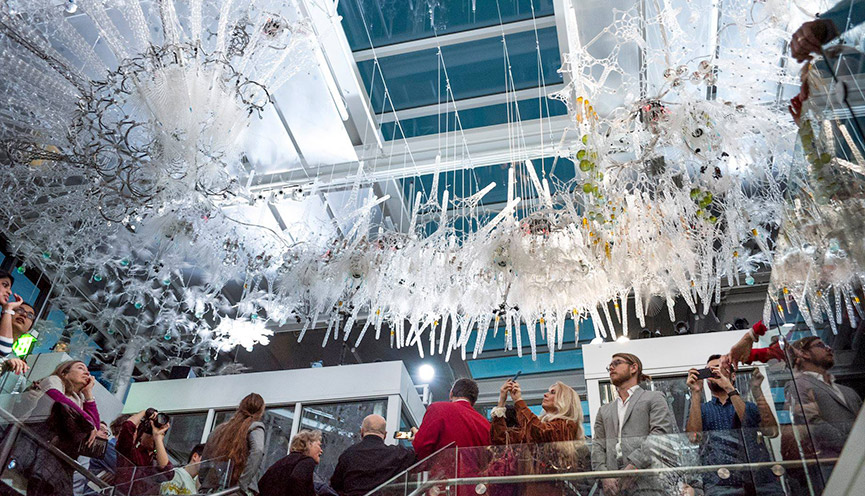
Luddy Hall: Home to Amatria
Indiana University’s Luddy Hall is the home of several rather unique Sentient Architecture installations: Amatria, dendrites and moths. The installations foreshadow a future where the Internet of Things is omnipresent. They also demonstrate how embedded technologies affect humans that inhabit these spaces. The works were designed and built by members of the Toronto-based Living Architecture Systems Group (LASG: http://livingarchitecturesystems.com) led by Philip Beesley, Philip Beesley Architect Inc. and by members of the Cyberinfrastructure for Network Science Center (CNS: http://cns.iu.edu) at the School of Informatics, Computing, and Engineering, Indiana University, Bloomington.

Amatria

Amatria, hanging above the stairs in the 4th floor atrium, is a luminous, forest-inspired landscape of soaring clouds and tangled thickets of 3D-printed formations alive with artificial intelligence that invites visitors into an interactive, ethereal space. ‘She’ is a living sculpture with a delicate canopy of mesh- and frond-like organic structures suspended from the ceiling in Indiana University’s Luddy Hall atrium. She gathers information about her environment using light and motion sensors, responding with atmospheric sounds, undulating movements, and changing colors. She is aware of the people who enter her sphere to gaze upon her visual story of abiogenesis: the emergence of life during the earliest stages of development of the universe.
Birthdate: April 11, 2018
Resources: Amatria Pictionary | Link: Amatria Site by Philip Beesley
Pictures: 360 degrees, 3D View of Luddy Hall 4111, Amatria’s birth place
Videos: Installation | DEAF 2012
Publications: Carolyn Beans (2018) Science and Culture: Sentient architecture promises insight into our evolving relationship with AI. PNAS. 115 (30) 7638-7640.
Amatria Dendrite
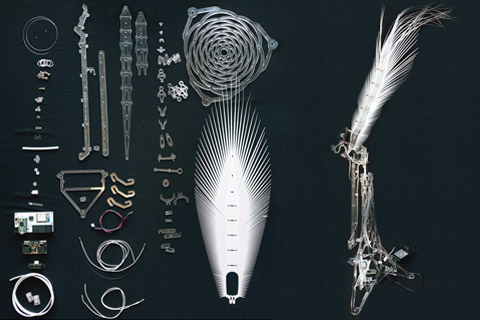
Amatria Dendrites, on display in the Luddy Hall Visualization Lab (room 4012), are pieces of living architecture. Each comprises one light sensor (the eye) and actuators such as lights and a strand of shape memory alloy that makes the sculpture move. Software controls the sensor and actuators. Dendrite fields were built in the 2017 ISE Summer camp. See below for events and activities where you can build or view dendrites.
Resources: Amatria Dendrite Manual | Code on GitHub
Amatria Moth
Amatria Moths, on display in the Luddy Hall Visualization Lab (room 4012), are the newest generation of Amatria-related architectural elements. For a limited time you can purchase a moth kit and build one yourself. Kits are $25 and can be ordered at go.iu.edu/moth. See below for additional events and activities where you can build or view moths.
Resources: Amatria Moth Manual

Amatria Fascinator
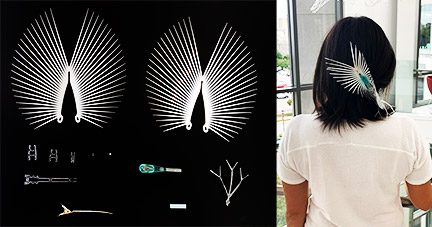
Amatria Fascinators are a limited edition personal work of art that you wear in your hair or elsewhere on your person, assembled from a kit costing $21 available at go.iu.edu/fascinator. Each kit has a pair of mylar fronds that are joined to a tear-drop glass vessel filled with copper sulphate, creating a beautiful contrast of white and silver on blue.
Resources: Fascinator Handout
Tavola: Making Sense of Amatria
Tavola is an application that visualizes data flows in Amatria. It helps visitors understand the physical structure of Amatria by showing the location of infrared sensors and actuators such as speakers, lights, motors as well as activation patterns unfolding over time. Tavola reads real-time data streams from Amatria (e.g., values of all 18 infrared sensors) and visualizes them using Unity 3D. It comes with a brief introduction of the sculpture and instructions on how to modify camera angles and the data on display. As Amatria evolves, Tavola evolves to capture new functionalities. Tavola is showcased during tours of Amatria; a permanent deployment is planned in the near future.
Resources: Tavola Overview | Tavola Real-time Sensor Visualization
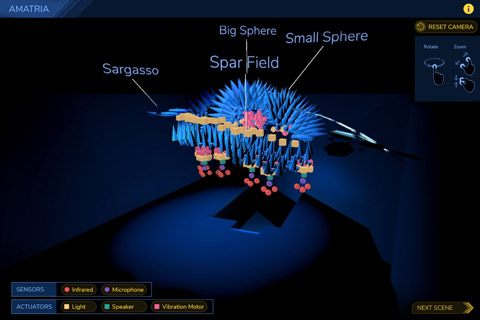
Amatria Amaria
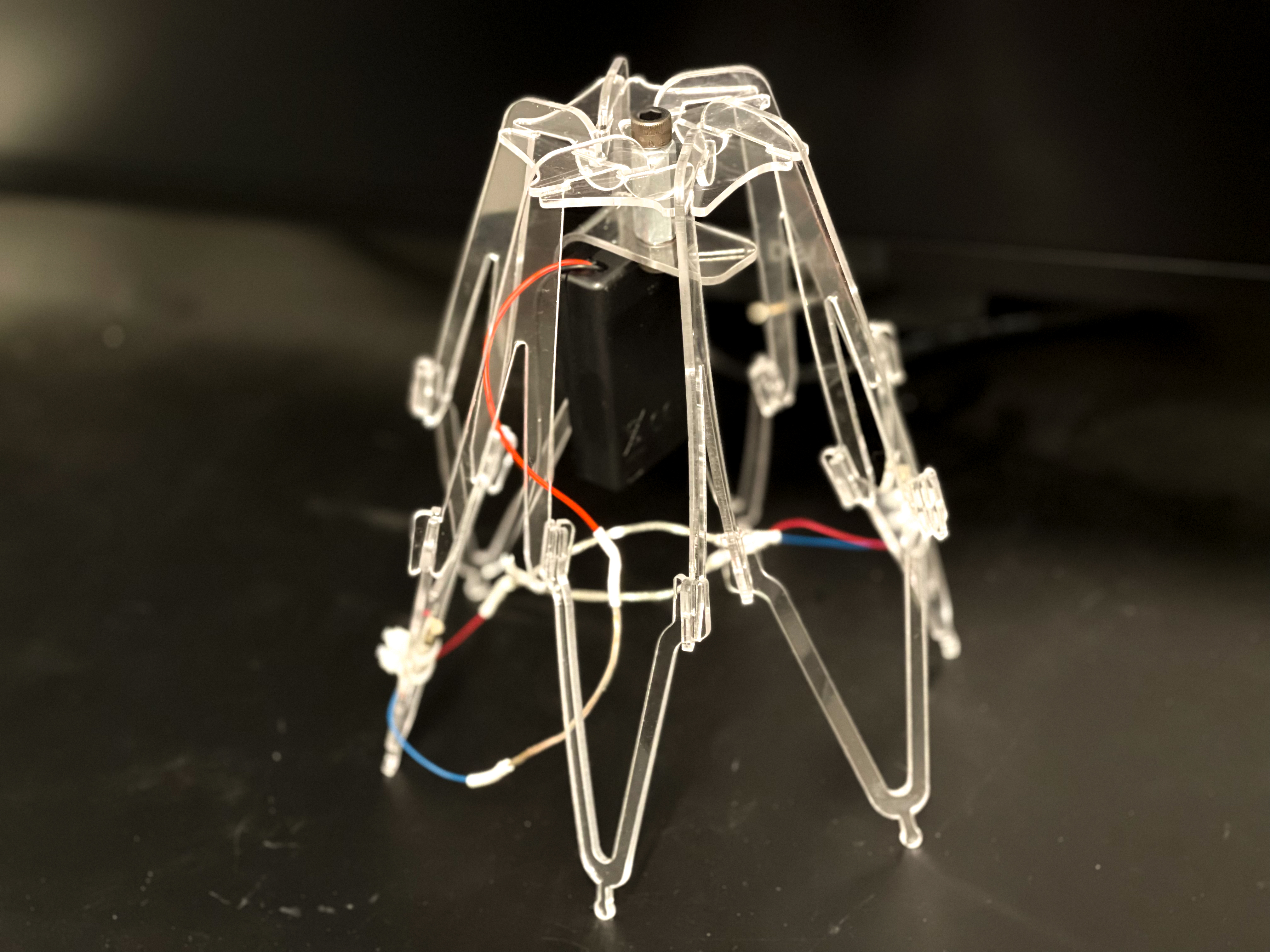
Amaria is the latest in our series of Amatria-related architecture. Assembled from different types of materials, this unusual structure will grab the attention of any passerby. Place her on a suitable surface, and she will even go for a walk! You can build Amaria yourself at home by ordering a kit for only $35 at go.iu.edu/amaria. You can put Amaria together in less than 20 minutes.
Resources: Amaria Handout
Location
Indiana University - Bloomington
4th Floor, Luddy Hall
700 N Woodlawn Ave
Bloomington, IN 47508
Map
References
Beans, Carolyn. 2018. "Science and Culture: Sentient Architecture Promises Insight into Our Evolving Relationship with AI." PNAS 115 (30): 7638–7640.
Acknowledgements
Amatria, Dendrites, and Moths were designed and developed by the Living Architecture Systems Group in association with Philip Beesley Architect Inc (livingarchitecturesystems.com and philipbeesleyarchitect.com).
Tavola was designed by Ph.D. student Andreas Bueckle under the supervision of Katy Börner, Director of the Cyberinfrastructure for Network Science Center (CNS: http://cns.iu.edu) at SICE.





